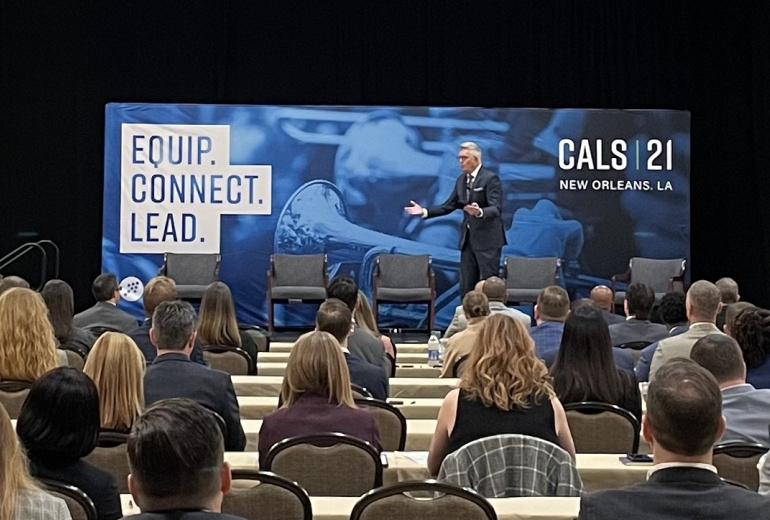Advent Culture
College Sports Facilities
Design
Recruiting
Listen to Understand

Today, I had the privilege to share some ideas with our friends at the 2021 College Athletics Leadership Summit in New Orleans. It was the first time this group had gathered in person for two years.
At this moment in culture, we took the time to reflect on how recent events have created a divide among some of the student athletes and staff members we serve. As leaders, these talented men and women at CALS ’21 have the job of helping narrow this divide so that everyone feels included.
I offered to the group that a key to feeling included is sensing that you belong. And, to feel like you belong, you need to be heard. The fundamental breakdown in our culture is that we’ve lost the art of listening.
The goal should be to listen to UNDERSTAND. Now is a great time to be reminded of some of the PITFALLS that trip us up. Here are just a few….
—Daydreaming or thinking of something else (even something as simple as your list of groceries) while another person is speaking;
—Thinking of what to say next
—Judging what the other person is saying
—Listening with a specific goal/outcome in mind
So in some ways, my colleagues at Advent and I are professional listeners. We have to understand our clients’ needs, challenges and stories in order to be able to creatively problem solve for them.
Here are some very specific tips that I would offer you from our experience:
—First: demonstrate that you’re listening by taking notes.
Our team carries notebooks, which we call listening books. It’s one of the first things someone receives when they join our team.
If you can’t take notes, use an app like Otter.ai to record and transcribe notes for you.
—Second: recap in writing what you heard.
By using your notes to speak back to the other person what you heard them say, you give them a chance to clarify
But more importantly, you let them know how deeply you’ve listened to them. Do not start off with your response to what you heard, or what you want them to hear. The only purpose of this communication is for them to know that they’ve been heard
At the end of the email, let them know what you think next steps are, if any.
—Third: use what you heard in a way that honors the person.
This might be referencing something you learned from them in a team meeting. Or it might be acknowledging your appreciation to them for trusting you with their thoughts. If there is something you can act on, find a way to do it.
These 3 things seem really simple, but you’ll be surprised by how much traction you gain from adopting a practice of deep listening. These are easy tools to adopt, but that will lead to transformation.